Milan, Piero della Francesca's Augustinian Polyptych on display reconstructed after 555 years
In Milan, the Poldi Pezzoli Museum is reconstructing for the first time in 555 years a masterpiece by Piero della Francesca (Borgo San Sepolcro, 1412 - 1492): the Augustinian Polyptych made for the church of the Augustinians in Borgo San Sepolcro, begun in 1454. The reconstruction takes place as part of the exhibition Piero della Francesca. A Masterpiece Reunited, open to the public from March 21 to June 24, 2024. With the support of Fondazione Bracco as Main Partner, the museum presents the reconstruction of the polyptych completed in 1469, and painted for the church’s high altar.
Considered one of his most challenging works, the altarpiece was later dismembered and dispersed by the end of the 16th century. Currently, the remaining fragments of the Augustinian polyptych, including eight panels (the central panel and most of the predella are still missing), are in museums in Europe and the United States, with the Poldi Pezzoli Museum possessing the panel depicting St. Nicholas of Tolentino, one of the four saints belonging to the central register of the polyptych. In the past, several museums had attempted to reunite the polyptych, including the Poldi Pezzoli Museum in 1996, the Frick Collection in 2013, and the Hermitage Museum in 2018. However, since not all the necessary loans had been granted, only a “virtual” reconstruction of the work had been proposed. Now, thanks to the collaboration with important museums that own the surviving fragments, such as the Frick Collection in New York(Saint John the Evangelist, the Crucifixion, Saint Monica and Saint Leonard), the Museu Nacional de Arte Antiga in Lisbon(Saint Augustine), the National Gallery in London(Saint Michael the Archangel) and the National Gallery of Art in Washington(Saint Apollonia), it will finally be possible to admire all the fragments of the famous polyptych brought together in an ambitious exhibition. This project is supported by major institutions such as the Bracco Foundation, main partner, and Intesa Sanpaolo, institutional partner with the Gallerie d’Italia.
The exhibition, conceived by Alessandra Quarto, director of the Poldi Pezzoli Museum, is curated by Machtelt Brüggen Israëls (Rijksmuseum and University of Amsterdam) and Nathaniel Silver (Isabella Stewart Gardner Museum, Boston), scholars of international standing and the last to propose the reconstruction of the polyptych in 2013 at the Frick Collection in New York on the basis of investigations conducted so far. The organization of the exhibition is by Lavinia Galli, conservator, and Federica Manoli, collection manager, of the Poldi Pezzoli Museum, with coordination by Arianna Pace, of the exhibitions office. Presented in an installation curated by architect Italo Rota and international design studio CRA-Carlo Ratti Associati, the panels are juxtaposed with the frames that have “accompanied” them throughout these centuries of collecting history. The project aims to return the public and scholars to the full experience of Pierfrancesco’s work with all its evocative power of the Renaissance era. Viewed up close, the paintings will reveal the master’s meticulous attention to luxurious textiles and jewels such as the gold brocade of St. Augustine and the armor of St. Michael the Archangel and, by contrast, the simplicity of St. Nicholas of Tolentino’s austere and rough habit. They will also show the play of light that Piero della Francesca skillfully used for each of the panels, revealing great attention to detail in the ornaments that now dialogue perfectly with the decorative arts in the Milanese museum’s collection.
For the occasion, the Bracco Foundation promoted a diagnostic imaging campaign on the Poldi Pezzoli’s San Nicola da Tolentino, carried out in situ by the team of researchers from the University of Milan, IUSS Pavia spinoff DeepTrace Technologies, with the collaboration of the La Venaria Reale Conservation and Restoration Center, coordinated by Professor Isabella Castiglioni: the campaign made it possible to explore the painter’s working techniques and the materials used, as well as the stages of the polyptych’s composition, dismemberment and reconstruction. Thanks to these analyses, it was possible to examine the artwork in detail, from the surface visible to the naked eye to the deepest preparatory layers, obtaining a visual and intuitive representation of the characteristics and surface distribution of the materials.
The investigations revealed interesting details, such as the dusting points of the cartoons that are still visible in some areas of the painting, suggesting the use of different techniques by Piero della Francesca. X-rays showed that the painting is made on a single plank of poplar wood, with traces of the crosspieces removed and thinning. Through high-resolution imaging and microscopic and spectroscopic analysis, it was possible to explore the deeper layers, revealing hidden details. One of the most significant discoveries was that Piero della Francesca did not have dedicated panels, but painted on a medieval structure, thus creating his masterpiece.
The exhibition in Milan provides an opportunity for the public and plays a key role in research and study by experts from around the world. There will be lectures, study days and activities for families and children, including weaving workshops in collaboration with the Lisio Foundation in Florence, offered by the Fondazione Cologni dei Mestieri d’Arte. The Poldi Pezzoli Museum’s youth group will organize events dedicated to visitors under 35, such as “Piero in Steam,” which will highlight the relationship between art and science through guided tours of the exhibition and fun activities, in collaboration with Abbonamento Musei Lombardia. In addition, the museum is committed to accessibility, offering a new route for visually impaired and blind visitors with tactile visual panels and audio-visual guides available in Italian and English, supported by Cassa Depositi e Prestiti. This support also includes dedicated routes for young people in the care of the Milan City Council’s Reparative Justice Department, both in the museum and in the Beccaria juvenile detention facility.
“Milan will be at the center of this world-class cultural operation,” says Alessandra Quarto. “In the Augustinian polyptych Piero della Francesca ’brought heaven down to earth,’ Milan’s Poldi Pezzoli repeats, for one unmissable time, this miracle.” Thanks to the support of Fondazione Bracco, which has always been committed to the enhancement of the relationship between science and art, also planned is an articulated campaign of non-invasive diagnostic analysis on some of the works in the exhibition, which will be an integral part of the exhibition itinerary and will trace the painter’s working techniques and the materials used, as well as the paths of composition, dismemberment and reconstruction of the polyptych.
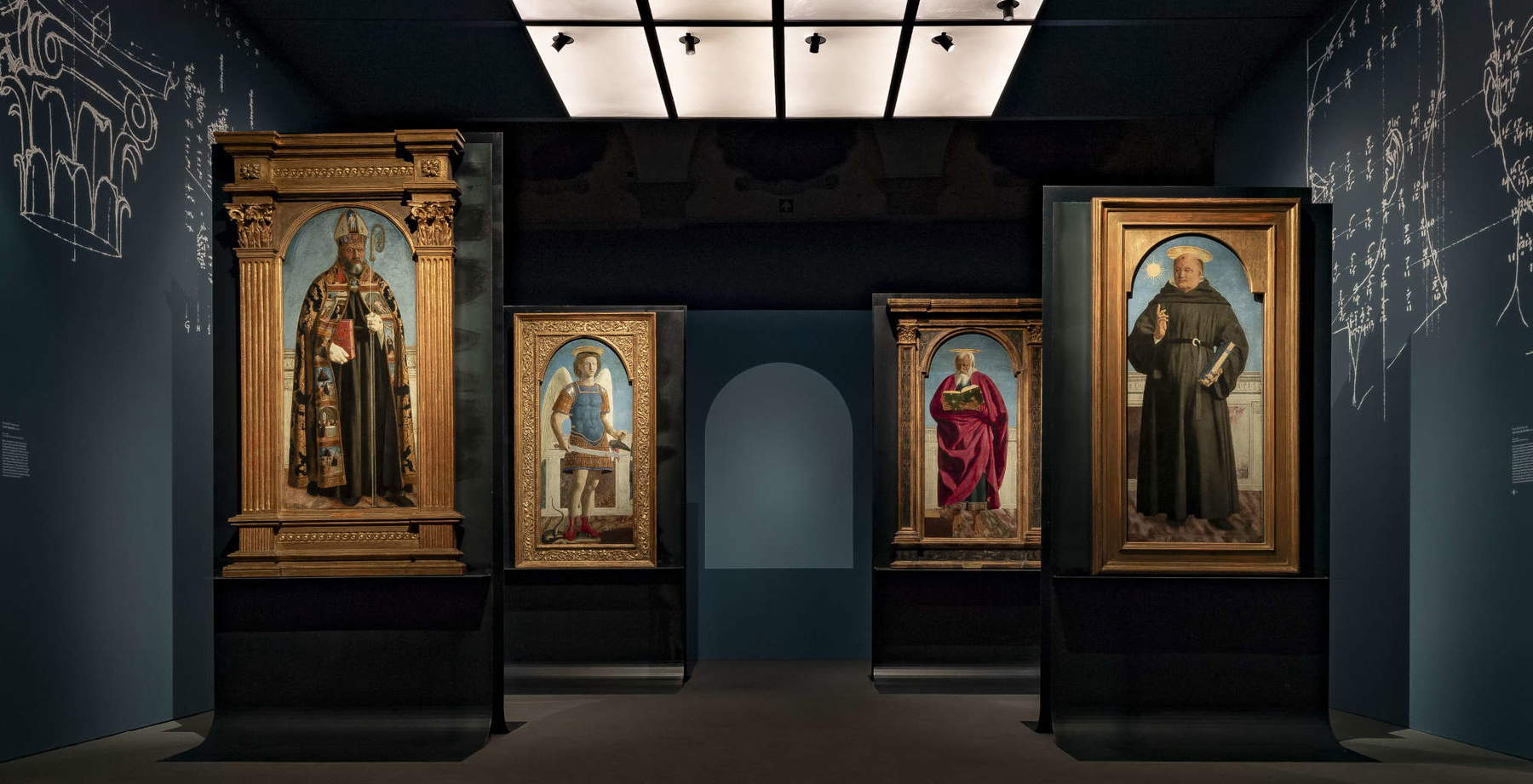
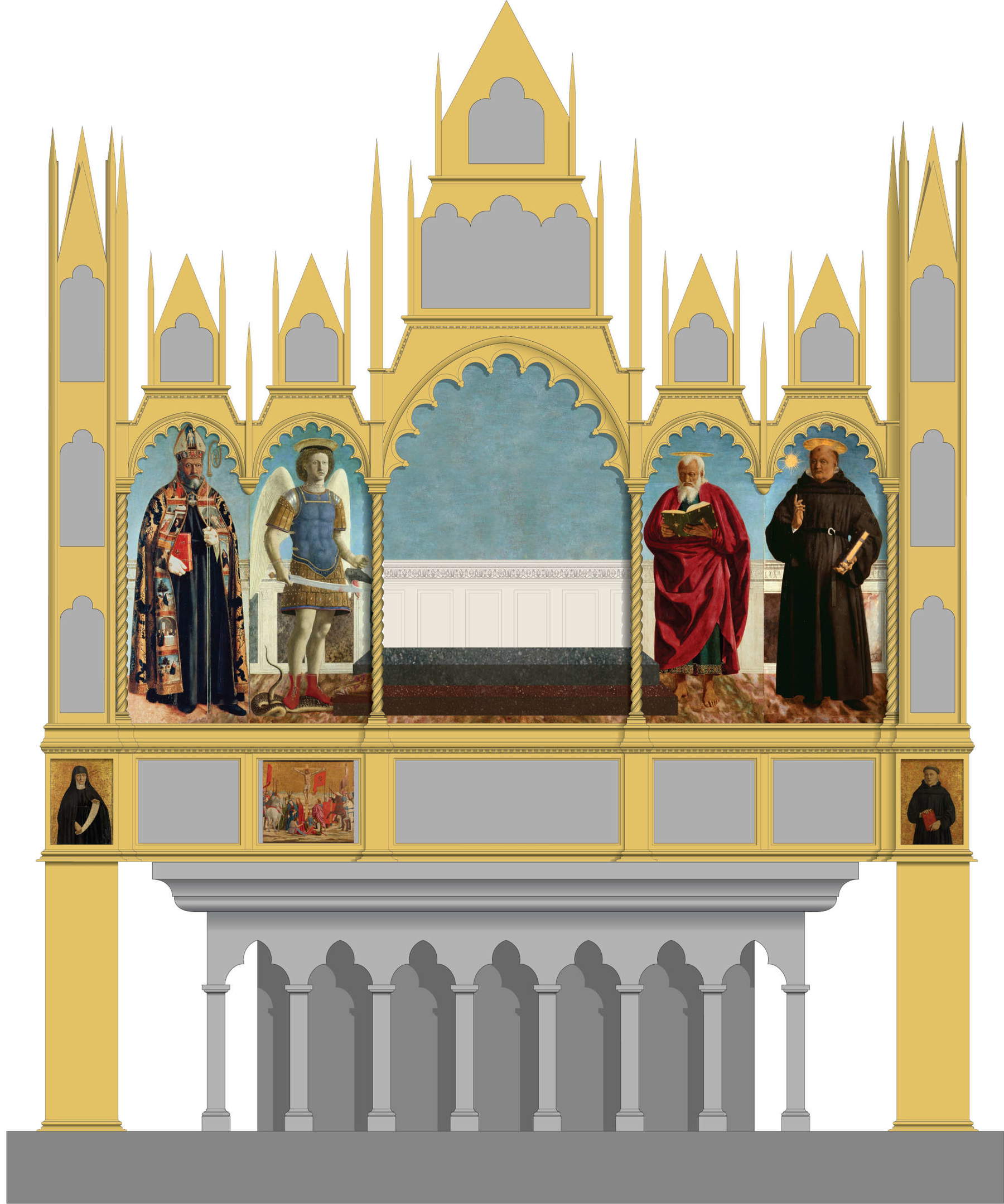
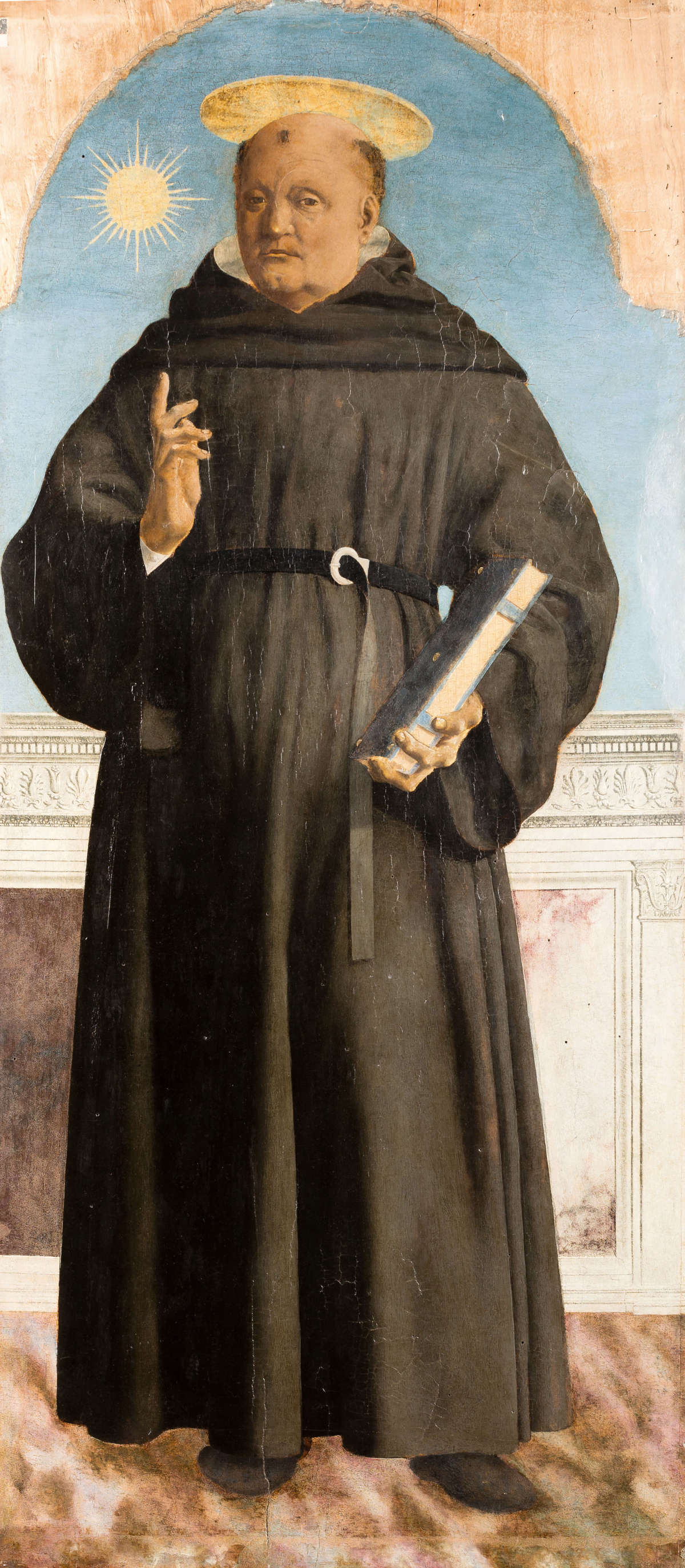 Piero
Piero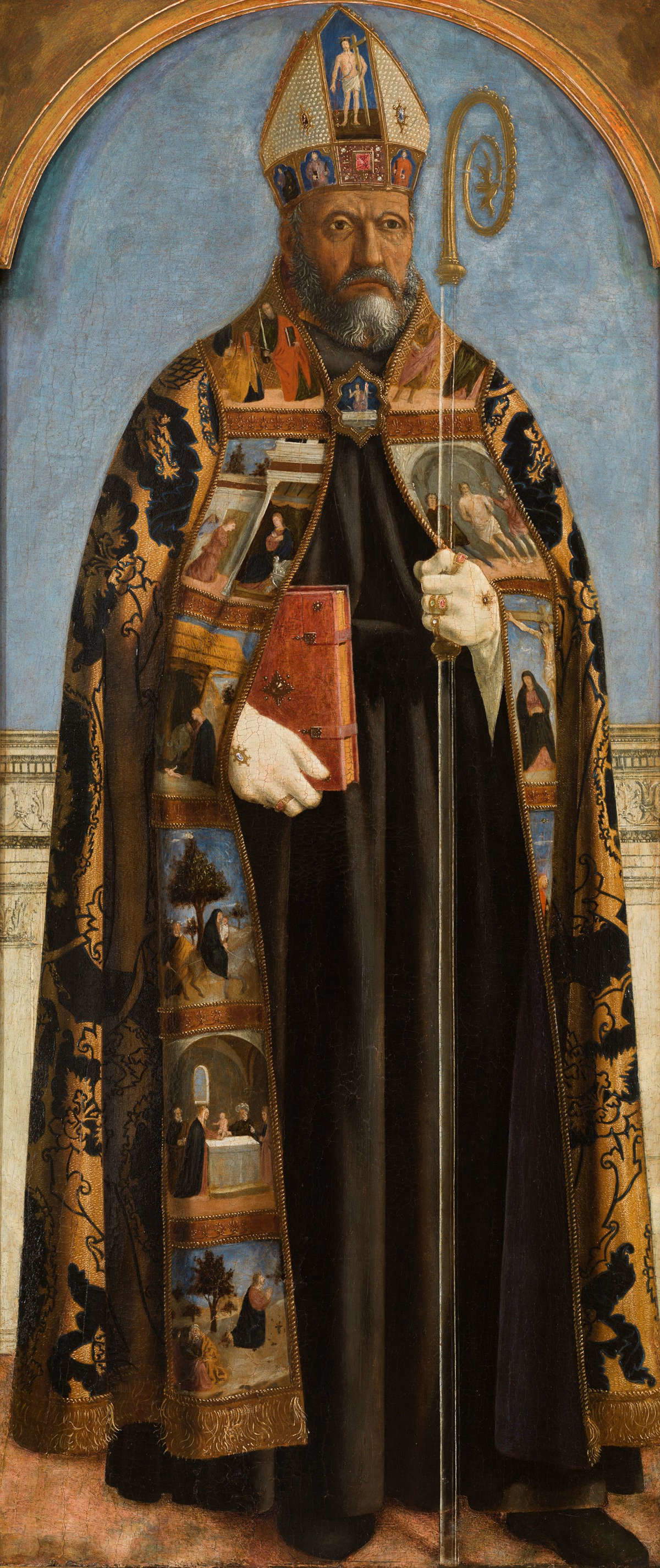 Piero della
Piero della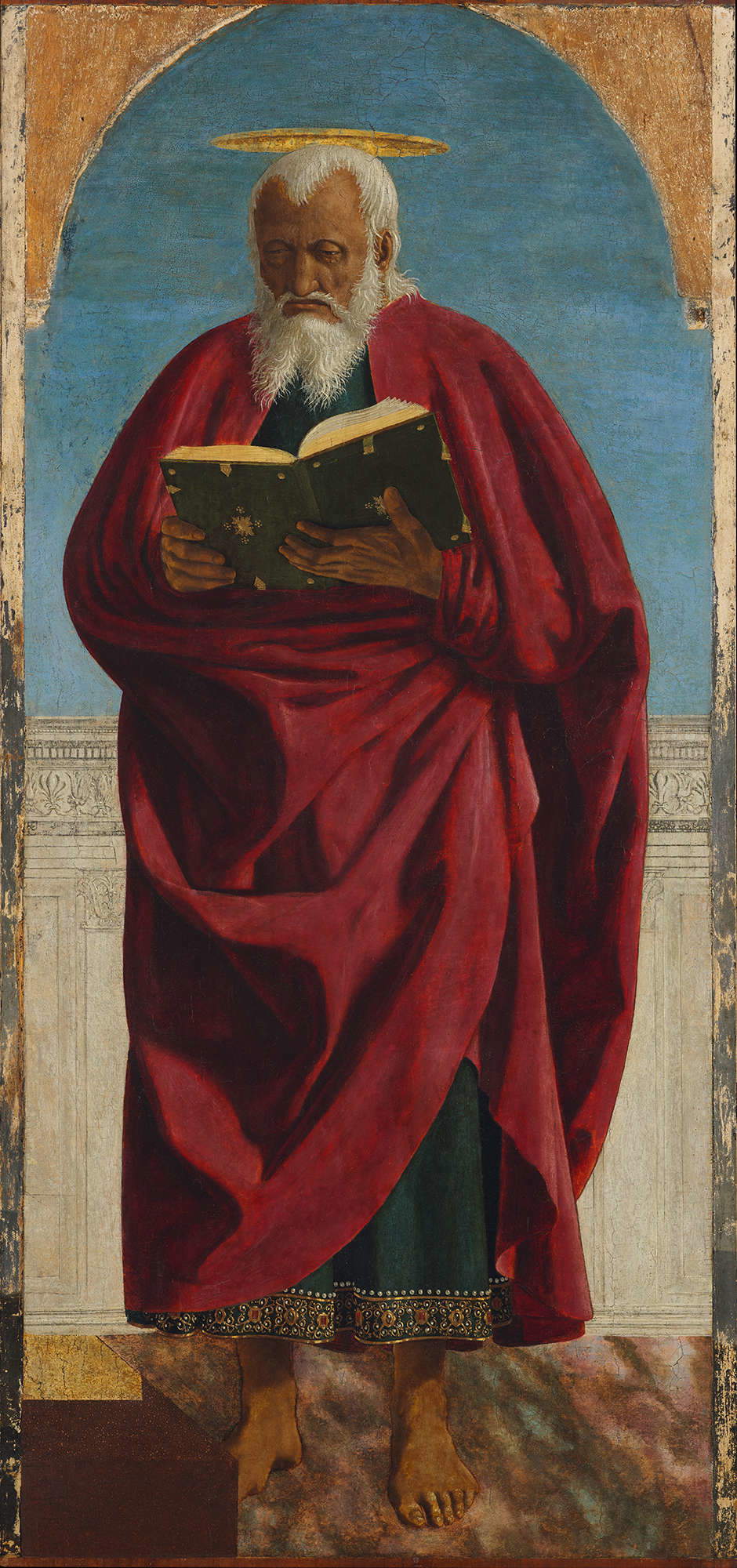

 Piero
Piero
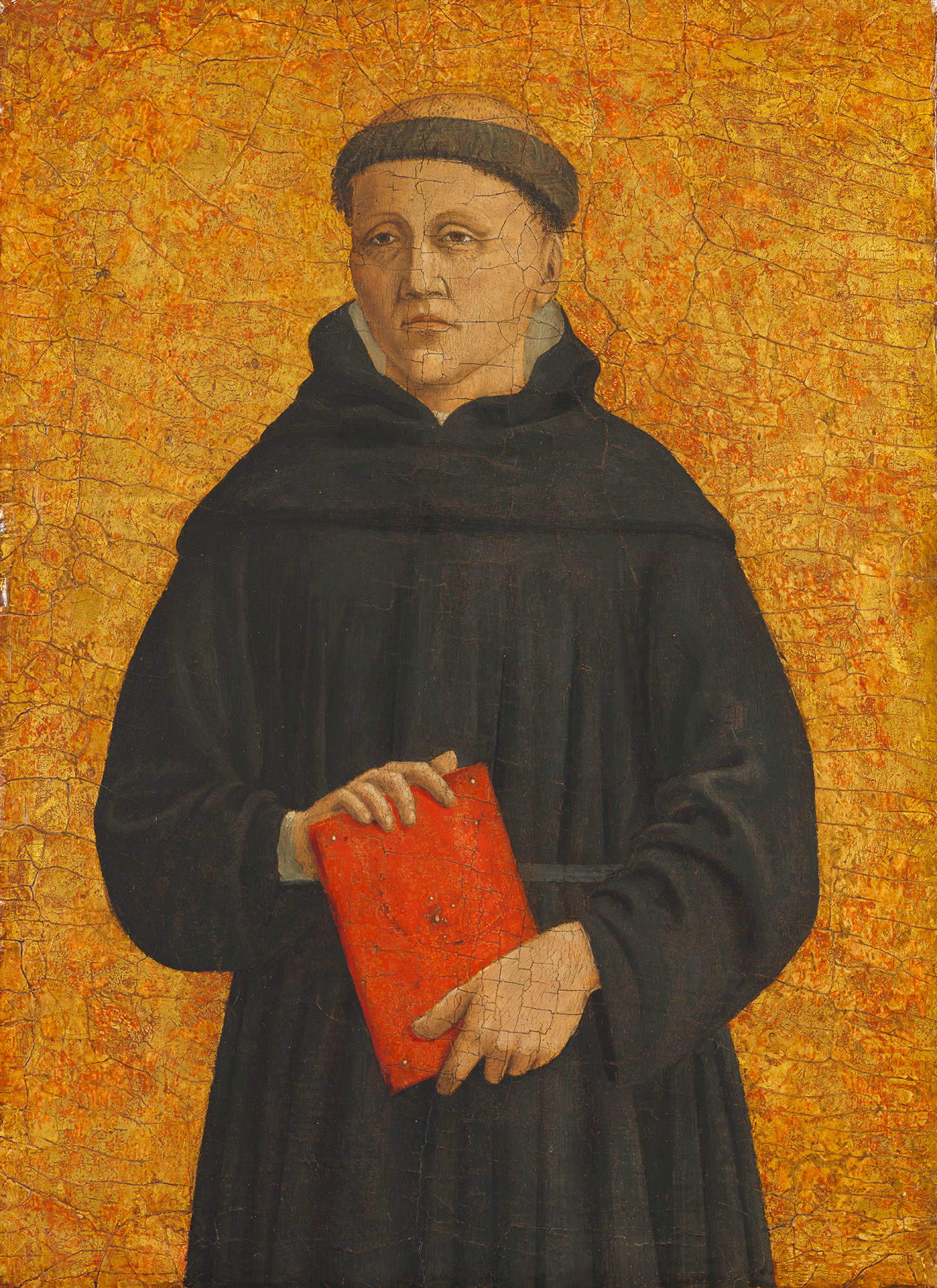
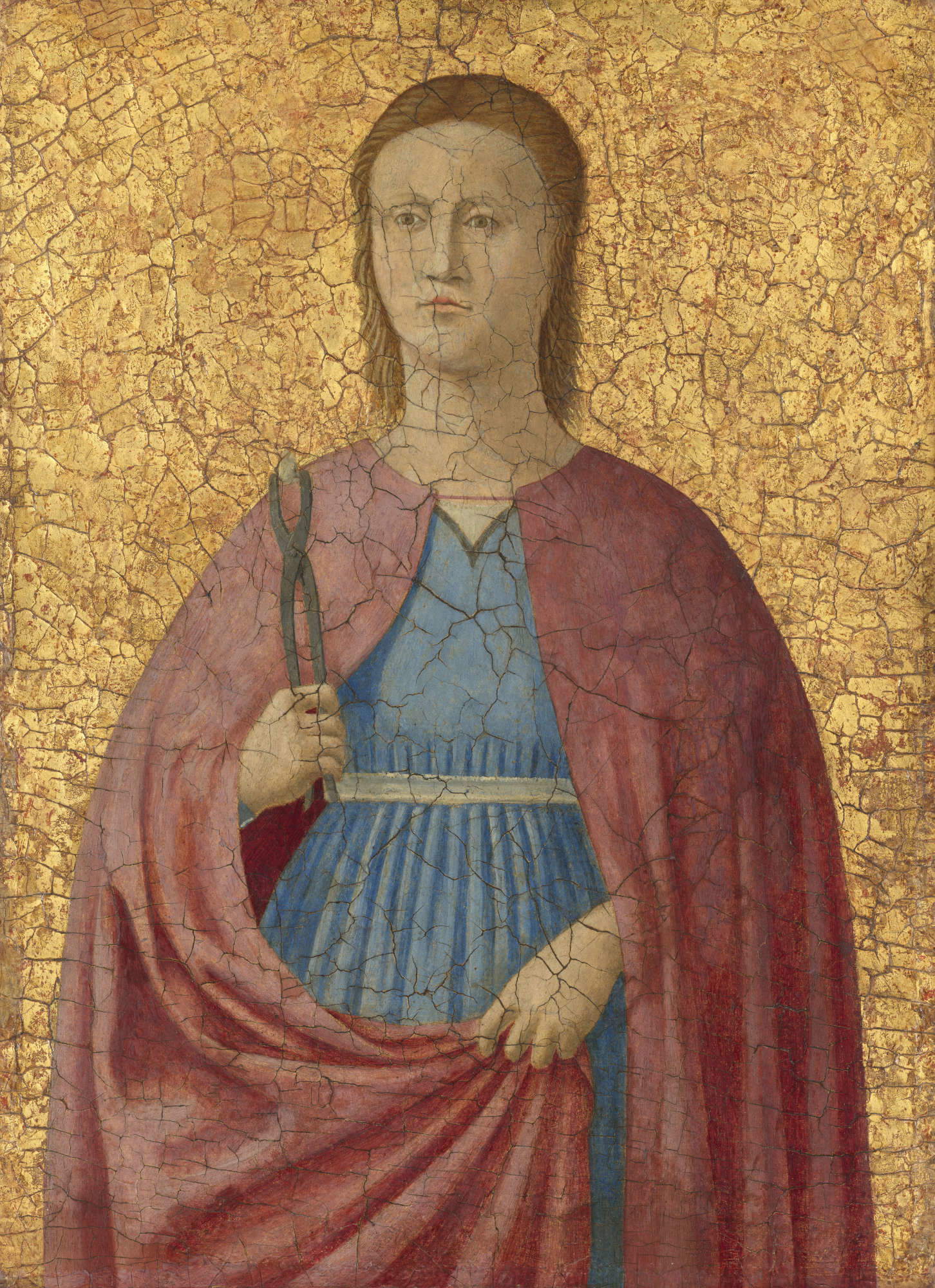
“Fondazione Bracco is proud to support this major project of international caliber, made possible through collaboration with major lending museums, including the Frick Collection in New York, of which I have wonderful memories,” says Diana Bracco, President of Fondazione Bracco. “I add an aspect of further interest to visitors. The exhibition will be extraordinary not only from an artistic point of view, but also from a scientific one: in fact, it will offer the opportunity to investigate and place in dialogue some of the most evocative figures of the great work. As is our custom, also for this exhibition we wanted in fact to give life to a scientific project, in collaboration with several Universities in Milan, to enhance some of the works in the exhibition through the support offered by technological research, imaging, a sector in which Bracco is a world leader. An articulated campaign of non-invasive diagnostic analysis will allow the discovery of the painter’s working techniques and the materials used, as well as the ways of composition, dismemberment and reconstruction of the polyptych.”
Michele Coppola, Executive Director Arte Cultura e Beni Storici Intesa Sanpaolo, says, “We felt it was indispensable to be at the side of a major Italian museum on the occasion of this unique project that unites the work of major international institutions around a Renaissance masterpiece, allowing the extraordinary work of Piero della Francesca to be admired in Milan for the first time reunited. The Poldi Pezzoli Museum and Intesa Sanpaolo’s neighboring Gallerie d’Italia have over the years built a history of fruitful collaboration that finds today a further significant moment of sharing. What unites us is our strong commitment to enrich Milan’s cultural offerings with exhibitions, initiatives and valuable contributions.”
“The exhibition on Piero della Francesca’s Augustinian polyptych at the Poldi Pezzoli Museum is one of the truly just and moving ones because it sees reunited, after centuries of dispersion, his works in their original coherence, coming closer to what the great ’painter of light’ had conceived,” explains curator Machtelt Brüggen Israëls. "In addition, the Bracco Foundation’s initiative to make special technical investigations on the Saint Nicholas of Tolentino provided the impetus for curators and colleagues at museums in London, New York and Washington to carry out further technical investigations, which allowed us to understand the mystery of the subject of the missing panel, as well as the revolutionary way in which Piero reused the pre-existing wooden structure on which he was forced to paint."
“We are proud to host in Milan, in one of our city’s House Museums, an exhibition of such high cultural value,” comments Milan Mayor Giuseppe Sala. "Piero della Francesca. A Masterpiece Reunited is the result of extraordinary research work and international collaboration: I thank Director Quarto, the curators, the great museums that own the panels and Fondazione Bracco for believing in and making possible the reunion of the Augustinian Polyptych. The exhibition of this masterpiece at the Poldi Pezzoli in the spring will be an unmissable event that will help confirm Milan as an artistic and cultural center of world interest."
“Milan is increasingly a city of art and culture,” says Councillor for Culture Tommaso Sacchi, “and its international reputation, combined with an extraordinary heritage and the prestige of its institutions, allows it to offer the Milanese and the many visitors to our city an exceptional event, which takes us back 500 years to witness the spectacle of the reconstruction of Piero della Francesca’s Augustinian Polyptych. An important occasion not only for enthusiasts, but also for scholars and experts from all over the world.”
 |
| Milan, Piero della Francesca's Augustinian Polyptych on display reconstructed after 555 years |
Warning: the translation into English of the original Italian article was created using automatic tools. We undertake to review all articles, but we do not guarantee the total absence of inaccuracies in the translation due to the program. You can find the original by clicking on the ITA button. If you find any mistake,please contact us.





























